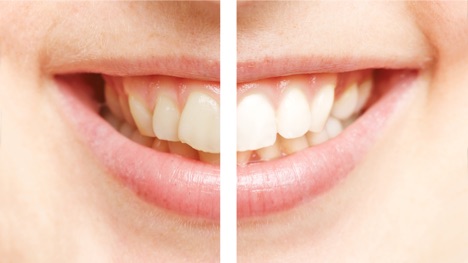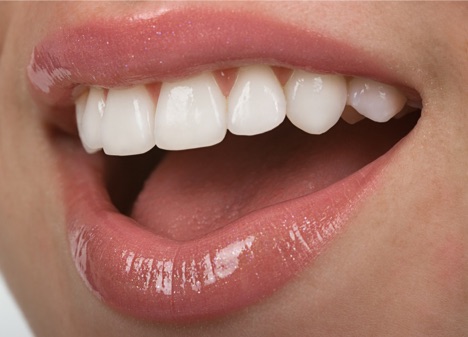
Mouthguards for Children’s Sports
Mouthguards do more than protect your child’s teeth. A good mouthguard that has been properly fitted actually redistributes the force

Teeth whitening improves your smile by removing discoloration with various products and procedures. Its popularity stems from significant smile enhancements.
Dentists supervise professional whitening, using gels for in-office treatments. These custom treatments use stronger gels for quicker results and include take-home trays for maintenance. Despite potential sensitivity, professional options offer long-term aesthetics and durability. The familiar Zoom whitening uses heat to accelerate results, although it may increase sensitivity.
Whitening toothpastes and strips provide mild stain removal. However, for deeper stains, dental office kits might be necessary. These professional kits outperform over-the-counter options, especially for misaligned teeth, ensuring gel reaches all areas effectively.
Home remedies, like baking soda or fruit mixes, claim to whiten teeth. Yet, they often fall short and can damage enamel. It’s crucial to avoid acidic and sugary substances that can erode tooth surfaces.
Professional treatments offer predictable results, avoiding ingredients that harm teeth. In contrast, home remedies lack scientific support and can inadvertently harm dental health.
Prevent stains by avoiding pigmented and acidic foods. Use fluoridated toothpaste and consider fluoride supplements to prevent cavities and discoloration. Regular dental consultations can further guide effective whitening strategies.
Teeth whitening allows you to improve the color of your teeth by removing discoloration through the use of different products and procedures. Whitening is very popular and one of the most frequently opted for dental treatments. This is due to the fact that it greatly improves the smile of people undergoing the treatment.
There are many ways to get your teeth whitened. Let’s compare professional teeth whitening techniques with some home remedies so you can learn the best treatment method for your whitening needs. Let us look first at professional teeth whitening techniques.
Professional teeth whitening procedures are supervised by a dentist. Most of these methods refer to in-office treatments. The most common treatment method is to use a whitening gel to remove the superficial stain on our teeth. The dentist supervises the procedure carefully so that gel does not damage the gums.
In-office whitening typically requires a custom made tray. There is no one size fits all as every individual has their own unique tooth size and arch shape. A mould is first made so that a custom fit bleaching tray can be produced. The tray is what will hold the bleaching gel and keep it in contact with the teeth to be whitened. With contact and time, the teeth usually rid themselves of their surface stain. Typically, a stronger concentration of the bleaching gel is used for the in- office sessions. After a couple rounds of this the patient is sent home with their trays and whitening gel of a lower concentration which is safer to use at home. For mild to moderate staining the in-office session combined with 10-14 days of at home bleaching will yield dramatic results. More significant staining will likely require more time and more bleaching agent. With any bleaching kit comes the risk of tooth sensitivity. This risk increases if you have more areas of root exposure. If you feel tooth sensitivity that is more than just a little uncomfortable, stop using the bleaching agent and speak to your dentist. You may need to discontinue or use fluoride to help desensitize your teeth.
Sometimes a heat source is used to speed up the bleaching process. This is the familiar Zoom whitening that most people have heard about. Trays are still required but a light is placed on the teeth when the trays and gel are in the mouth. Often times the result after the in-office sessions are quite significant but moderate to significant sensitivity often accompanies the in-office session. The trays and take home bleaching gel are given to the patient for them to continue whitening at home.
There are also many professional toothpastes and mouthwashes that can be used at home. These whitening toothpastes are more abrasive and the idea is to ‘scrub’ away your superficial stains. This works to some degree but is only slightly effective. Whitening strips may also be purchased at the drug store and this is effective for mild staining. If you have stubborn stain you may need to purchase a whitening kit from a dental office. The whitening strips do not fit as well as custom made trays and if you have quite a bit of misalignment you may find it difficult to get the gel to all the right places and this will compromise the end result. The concentration of the gel on the whitening strips are much lower than dental office grade kits and this is for safety. For very stubborn staining ask your dentist about their in office whitening packages.
We have all heard of home remedies that people claim will whiten our teeth. One talked about method is mixing baking soda with limewater. People claim that your teeth can be scrubbed with this solution to remove plaque and help return them to their original whiteness. Baking soda is often talked about as a good cleaning agent to whiten. This ingredient works as an abrasive, similar to whitening toothpastes which will “scrub” away mild surface stains. Avoid abrasives like these if you have pre-existing enamel wear and recession as you will literally be scrubbing away your enamel or root surface and this will lead to sensitivity. Avoid using these abrasives after a meal or consuming anything acidic as the acidity will soften your natural tooth structure, temporarily making it more susceptible to wear from your rough abrasive. Don’t brush away your teeth! Limewater or lemon water is never a good agent to use on your teeth because not only is it high in sugar, it is acidic. These are two of the necessary ingredients to cause cavities. It is never a good idea to rub anything acidic on your teeth. Acids dissolve tooth enamel and once the enamel is gone you will never get it back and this will lead to tooth sensitivity, yellowing of teeth (because you have lost your white enamel and underneath is the yellow dentin layer!) and higher risk of tooth decay.
Another talked about home remedy is to use fresh orange peel while cleaning your teeth every night. There is no evidence to show that this is effective. Perhaps the idea of it revolves around the texture of the peel making it abrasive. The peel may contain some acidity so again, avoid using this if you want to maintain the health of the enamel on your teeth.
Another interesting home remedy for teeth whitening that seems to be popular is using strawberries mixed with baking soda. It is claimed that strawberries have good things such as Vitamin C that will improve dental health. People seem to be making a paste out of them with a half-teaspoon of baking soda and the mixture is used as a toothpaste. Vitamin C is in fact good for your gums as it promotes collagen health, which constitutes part of your gums. Without enough vitamin C you may suffer from periodontal disease. If you lead a relatively healthy lifestyle and consume healthy foods that include fruit and vegetables, you are most likely getting enough vitamin C and do not need the help of vitamins or strawberry paste to improve your oral health. There is no evidence that shows that this mixture is effective in whitening teeth. In fact, routinely using this mixture as a topical on your teeth is detrimental to your dental health. Just like lemon/lime water, mushed up strawberries are full of sugar and have an acidic component to it. Eat your fruit, don’t rub it on your teeth!
Professional treatments provided at the dental office have a lot of evidence backing them. Just like most things, there are pros and cons. Some of the cons being the high cost, the time it takes, the risk of sensitivity and gum tenderness. All of these things can be addressed by your dentist. The pros are that these treatments are heavily researched and the effectiveness is known and quite predictable. Ingredients that will promote cavities and erosion are avoided.
Unfortunately, home remedies are often made by people without any formal dental education who have an unclear understanding of the science behind dental health and dental treatments, and who base their claims on anecdotal evidence (“I had a friend who did this….”). So often we hear of miracle mixtures that include fruit mixed with something else. Fruit will always have a component of acidity along with sugar. This is very important to remember. Consume your fruit rather than rubbing it onto your teeth. Making this sort of thing a routine will be detrimental to your dental health. Remember, sugar is a food source for the bacteria that causes cavities. Don’t give them any more ammunition than they already have. Cavities are caused when bacteria eat sugar and produce an acid that dissolves your tooth to make a sticky hole. Don’t help them by throwing in more acidity from mashed up fruit or lemon/lime juice being rubbed on your teeth. Cavities aside, by routinely rubbing something acidic on your enamel, you will essentially slowly dissolve your most protective and whitest layer of your tooth. This result is the opposite of what most people intend. The allure of a natural topical is certainly appealing but we must default to science and our understanding how tooth decay and enamel erosion develops.
Baking soda is the most innocent of the home remedies. Feel free to use this agent as an abrasive to remove surface stains if you have minimal enamel erosion and gum recession. Confirm with your dentist that you are a good candidate for this type of home remedy.
For white teeth it’s easy, don’t consume anything that stains. Drinking highly pigmented beverages through a straw is helpful to minimize bathing your teeth in pigment. Reduce your consumption of acidic foods and beverages to maintain the health of your enamel. You don’t want that second layer (dentin) to show through because it is yellow-brown. Don’t get cavities because usually they are discolored and when they are fixed with a filling, the seam of the filling may stain and become visible. Use fluoridated toothpaste to avoid cavities. Take fluoride supplements to avoid cavities, but don’t take too many to cause fluorosis (google fluoride supplement dosage schedule) which causes discoloration. Don’t smoke. Don’t get really sick as a child requiring antibiotics when your adult tooth enamel is developing as this may result in tetracycline staining. See, having white teeth is easy. Talk to your dentist for more information.

Mouthguards do more than protect your child’s teeth. A good mouthguard that has been properly fitted actually redistributes the force

Damaged or misshapen front teeth can cause stress and lack of confidence. Fortunately, most cases can be improved. When it
© 2025 Dunbar Dental. All Rights Reserved